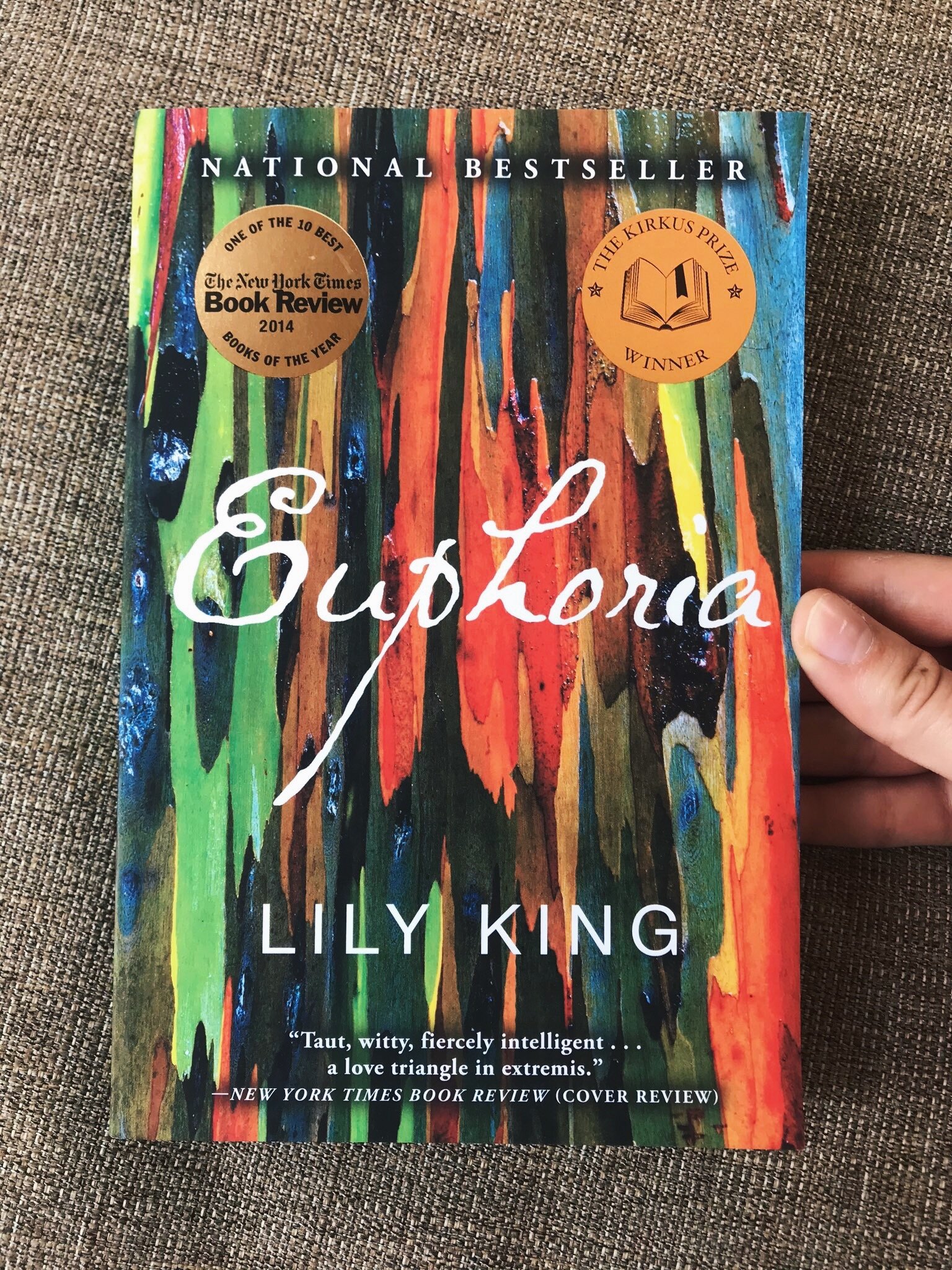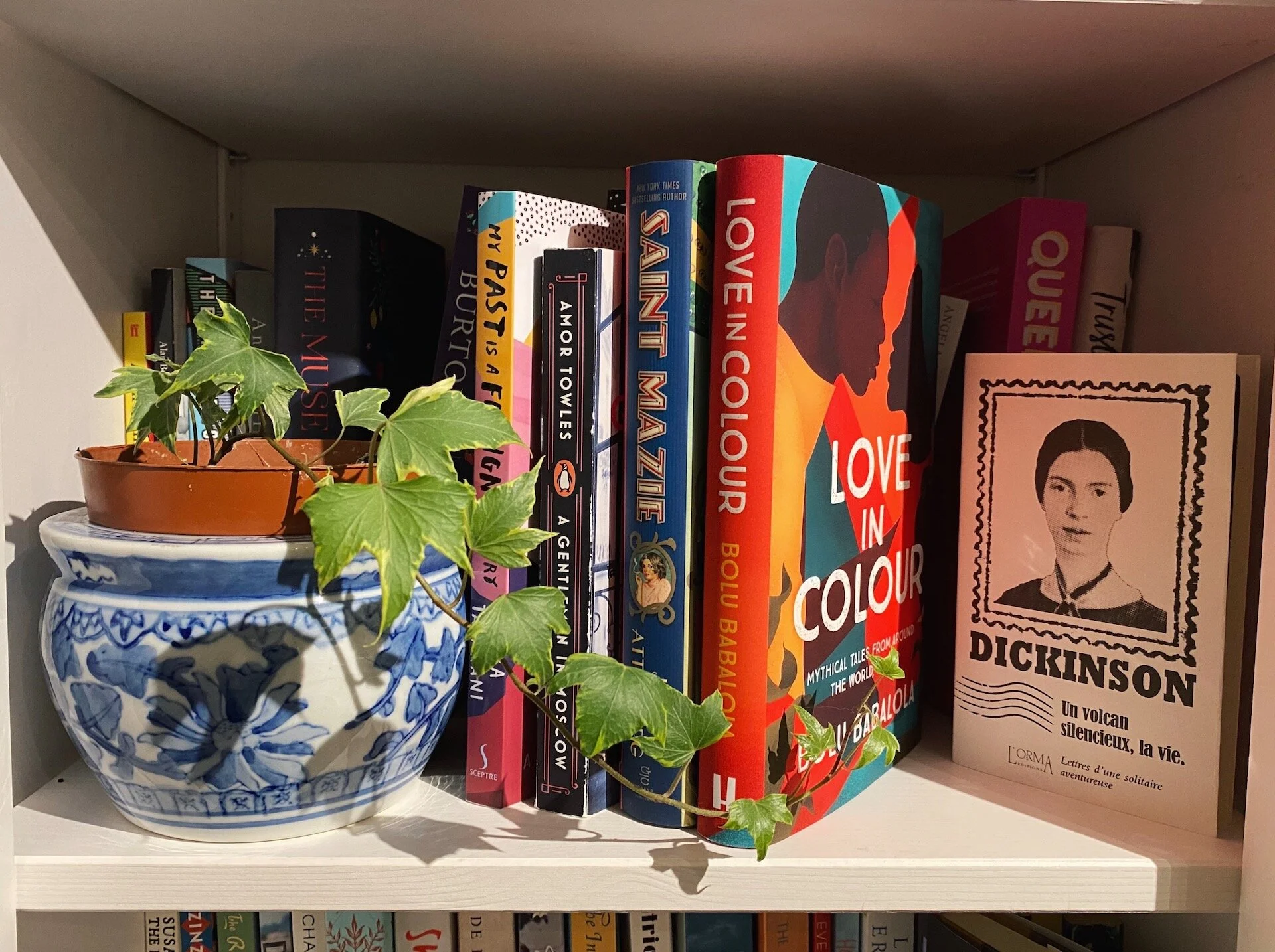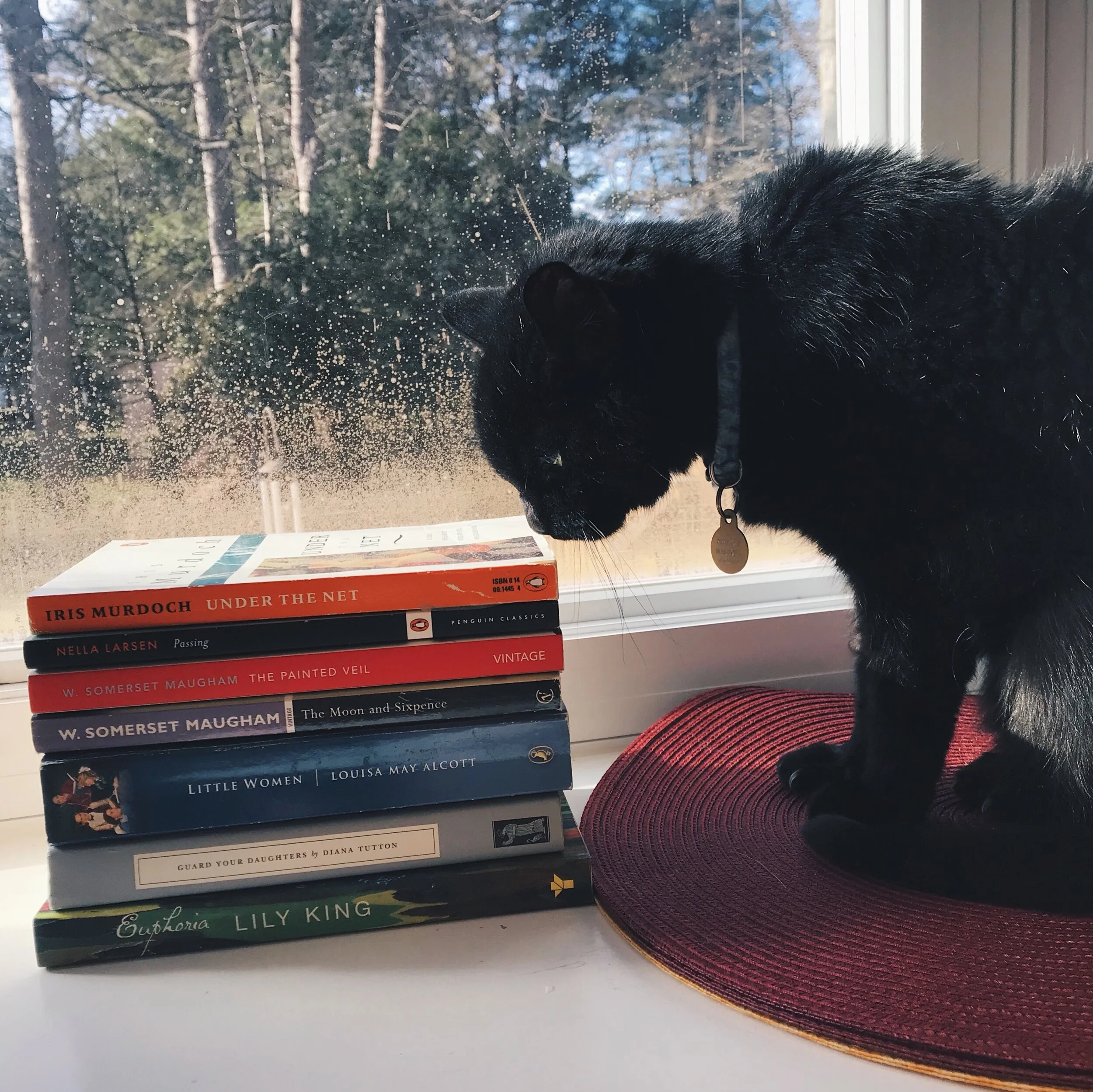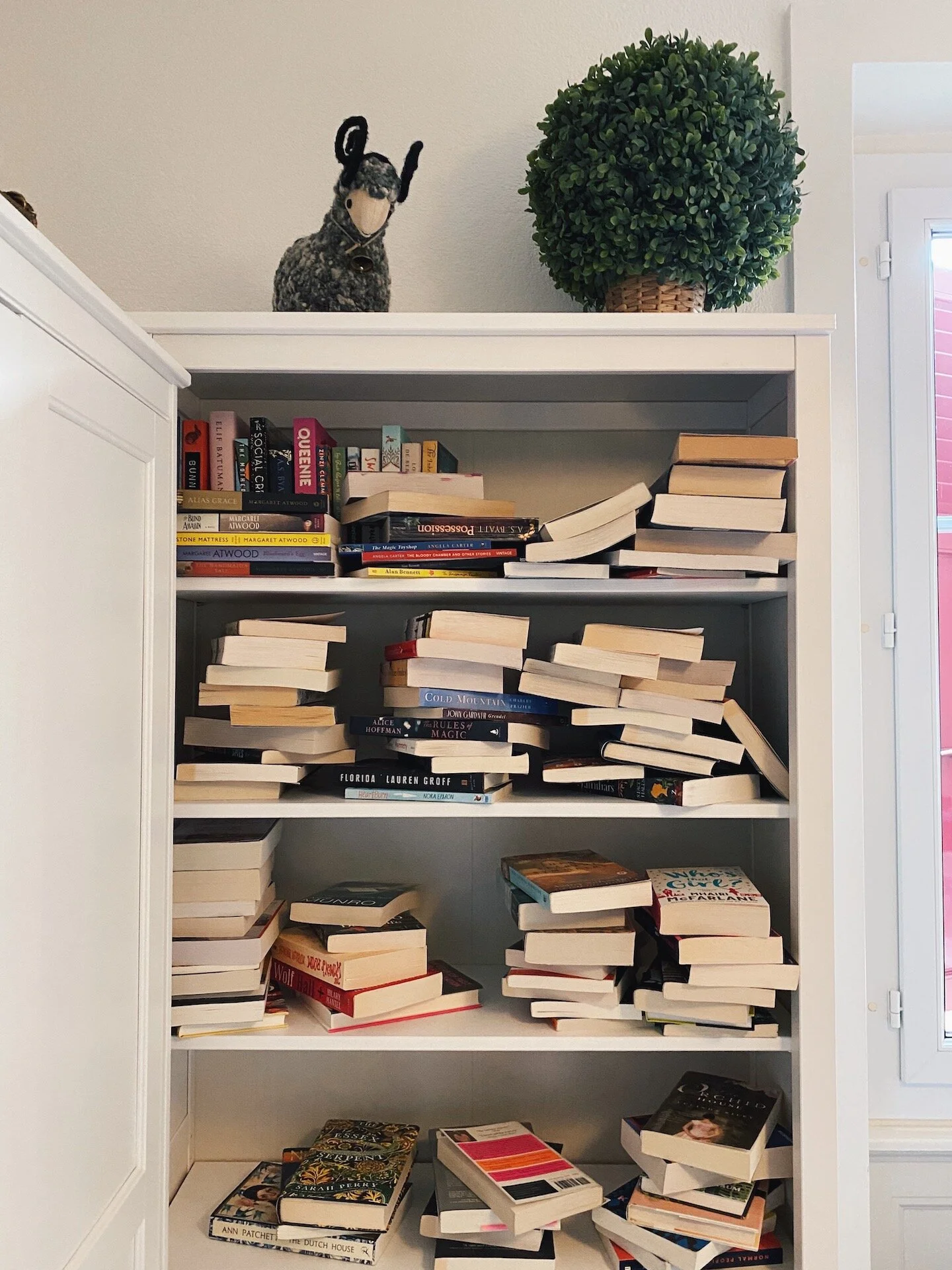Our 2020 in Books: Kiely Schuck
As a globally unusual year comes to an end and we enter into 2021, we consider the reading that defined each of our 2020s. In this piece, Kiely Schuck looks back at the sixty books that kept her company in a time that didn’t go quite as planned.
All photos courtesy of Kiely Schuck. The author’s cat, Peppercorn, with a stack of 2020 favorites.
The year 2020 did not go the way I expected it to, to say the absolute least. Having finished my graduate degree immediately prior to the new year, I had anticipated starting a full-time job and moving within a few months. That did not happen, and for six months of the year, I had no job of any kind. Hopefully this should explain that I’m not entirely crazy for having read 60+ books this year!
Euphoria, by Lily King.
My favorite book read this year was Euphoria by Lily King. I read it within thirty six hours, most of it on July 4th while sitting on my back porch in the shade, with an iced coffee in hand. This marvelous book, loosely based on the life of Margaret Mead, catapulted me into the world of Papua New Guinea in the 1930s, very different from the world that I was currently living in. King’s prose and story structure were very compelling, and the story left me with many questions about the purpose of anthropology and what it means to be “human” at all. Right after this I read W. Somerset Maugham’s The Painted Veil, which I had bought four years previously in Paris at the Shakespeare & Co. bookstore. The book is about a British doctor and his bored and beautiful wife, who must go to mainland China during a cholera epidemic in the 1920s. While this part of the plot did hit a bit too close to home (when one of the supporting characters says, “I believe as many people die from sheer fright in an epidemic as because they get infected,” especially), the story was incredible and, yes, took me far away from suburban New Jersey.
Maugham, picked up in Paris last year.
I actually went through a Maugham phase this year, reading four books by him. My favorite of these (and my second favorite book this year) was The Moon and Sixpence, a novel loosely based on the life of Paul Gauguin, an Impressionist-adjacent artist who left his home and moved to Tahiti to escape European civilization and experience “real humanity.” Maugham took these very loose facts and created a new character, Charles Strickland, whose story is told through the lens of an unnamed narrator who knew him as an acquaintance but tries to piece together the story of Strickland’s demise when the narrator finds himself in Tahiti later in life. The outsider-narrator device is always interesting to me, and the story that Maugham tells is fascinating because of what it says about the practice of art history — sometimes, there is no way to know the absolute truth, and the criticism and explanations of art and the artist’s life are often highly subjective. This is particularly true for the artwork of the real Paul Gauguin, and therefore the fictional Charles Strickland, both of whose personalities and artwork are now understood to veer towards themes of colonialism and Orientalism. Mostly, this book seems to encourage the more modern viewpoint that you can hate an artist but still love his (or her) art.
Nella Larsen’s Passing.
During the Black Lives Matter protests in early June, I realized that I had shamefully never read much by writers of color, particularly from my favorite literature time period of the early and mid-20th century. Soon enough, I read James Baldwin’s The Fire Next Time, an eloquent and incisive essay about the experience of African Americans in the 1960s. It is certainly the most important and perspective-changing book I have read this year. I also read Baldwin’s Giovanni’s Room, which explores the experience of LGBT people in the 1950s, and reflects the negative side of being one of the seemingly ubiquitous American expats in European capitals at the time. I absolutely loved this bittersweet story, which also gave me a new perspective on my experience of living in Italy just last year. A few months later, I also read Nella Larsen’s Passing, which is an excellent period document (and an excellent piece of fiction) about the tensions between white and black people in the 1920s, and the choices that light-skinned people had to make, in order to decide whether to “pass” for white or not. It was interesting to think that Larsen’s protagonist lived in the almost exactly contemporary world of Fitzgerald’s The Great Gatsby; Larsen’s novel should certainly be taught in high schools alongside Gatsby!
Speaking of The Great Gatsby, I also re-read many old favorites this year from what I called my “Nostalgia List.” I reread Gatsby, To Kill a Mockingbird, The Catcher in the Rye, and Franny and Zooey during June and July, most of which held up excellently. I also read S. E. Hinton’s The Outsiders and That Was Then, This Is Now, which I had adored as a teenager. Most recently, I’ve been diving back into the books that I enjoyed as a child: Konigsburg’s From the Mixed Up Files of Mrs. Basil E. Frankweiler, Raskin’s The Westing Game, Henkes’ Olive’s Ocean. All of these books occupy part of my heart, and it is comforting in these hard times to remember the person who I used to be, and who I have become.
During the 120 hours of Election Day in America in early November, I poured my anxiety into the pages of Diana Tutton’s Guard Your Daughters, which I had picked up from Persephone Books in London last year. It wound up being my third favorite book of the year, and I adored Tutton’s created world of five sisters trapped in a small English village who are kept at home by their highly-strung mother. The book was comforting with a small tinge of menace throughout, leading to an explosive and satisfying ending. (Although this book is hard to find without ordering from or visiting Persephone Books, I very highly recommend it.) After I finished it, there were still three days left of Election Night in America, and since I needed more comfort reading, I decided that it was finally time for me to read Louisa May Alcott’s Little Women. (Please don’t judge; I had a very low tolerance for books longer than 300 pages as a child!) The book met all of my expectations, and I loved its wholesome world, and especially the characters of Jo, Amy, and Laurie.
Shirley Jackson’s The Haunting of Hill House.
This year I also truly enjoyed my first reads of Knowles’ A Separate Peace, Lehmann’s Dusty Answer, Von Arnim’s The Enchanted April, Jackson’s The Haunting of Hill House, and Murdoch’s Under the Net. 2020 has been turbulent, painful, anxious, and depressing; and so, it has been comforting to step into so many different worlds throughout the year. Through the pages of a book, I was able to escape to suburban America and rural England in the mid-1900s, Papua New Guinea and Tahiti in the 1930s, and Paris in the 1950s. I found kindred spirits within the pages of these books, with Jo and Amy March of Little Women, Morgan in Guard Your Daughters, and Eleanor in The Haunting of Hill House. Books have been my lifeline this year, and while I am so thankful for literature always, I especially am right now. I’m excited to read even more excellent books in 2021!
Favorites of the year.
Kiely Schuck has a master’s degree in Italian Renaissance art. She is a voracious reader, an art museum enthusiast, a former expat, and constantly on the lookout for gluten-free pastries.
















Reading Naoise Dolan’s Exciting Times and Katie Kitamura’s Intimacies, Rachel Tay explores the unease of moving away from one’s own country and language.